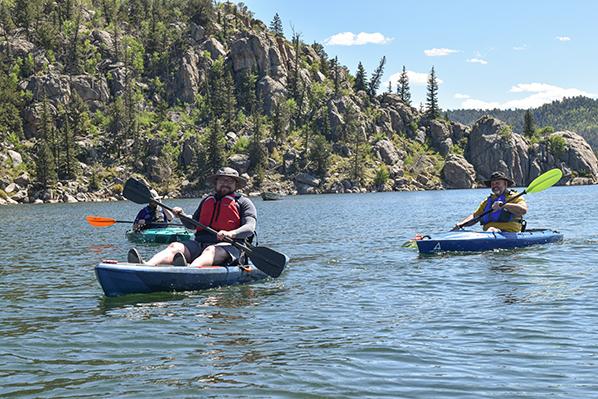Colorado boat owners must complete an online survey before renewing their boat registration, ensuring compliance with updated USCG requirements


The USCG requires specific information to be collected on every vessel registered in the United States. USCG requirements were recently updated to better represent the increasing variety of vessels on the market (inflatable, paddlecraft, etc.) and clarify how they are used.
To make sure Coloradans are in compliance with USCG changes, CPW is requiring boat owners to complete an online survey in order to collect and verify information such as boat type, hull material, boat use and propulsion type.
What is my boat type, hull material, boat use and propulsion type?
Boat type - Refers to one of the vessel classifications listed below.
- Motorized vessel types include: open motorboat (most common, no enclosed space for occupants), pontoon, cabin cruiser/motorboat (enclosed space for occupants), houseboat (living accommodations), personal watercraft (PWC or jetski), and auxiliary sail (sail AND motor/engine).
- Non-motorized vessel types include: paddlecraft (kayak, paddleboard, etc., with unattached paddles), rowboat (attached paddles), inflatable, and sail-only.
- If a motor or engine will be used on a ‘non-motorized vessel’, it is classified as an ‘open motorboat’.
- Common hull construction materials include: aluminum, steel, wood, fiberglass, plastic or rubber/vinyl/canvas. Fiberglass typically has a smooth, glossy finish, while plastic typically has a uniform, matte finish.
- The majority of boats are used for ‘pleasure’. If used for business purposes, select the appropriate commercial activity.
- Outboard - Mounted on the back of the vessel, outside of the hull. Electric trolling motors fall into the ‘outboard’ category.
- Stern drive - Engine located inside the vessel, drive shaft extends outside the back of the hull and propeller is used to steer.
- Sometimes called 'inboard-outboard' and often confused with inboard.
- Inboard - Engine located inside the vessel, a rudder separate from the propulsion system is used to steer.
- Pod drive - Engine located inside the vessel, propeller and transmission housed in a pod-like unit beneath the hull.
- Uncommon in Colorado. Similar to inboard but does not have a rudder.
- Other types include: sail, air thrust, propeller (fan), water jet, and manual.
Registered boat owners should have already received an email with details about completing the survey. Please contact 303-791-1954 if you did not receive an email from our license vendor ‘Aspira’. Be advised that a separate survey must be completed for each boat registered in the state.
Updated boat information will be printed on 2025 boat registration cards and mailed out early next year. Registration cards for the 2024 season remain valid and will not be reprinted. Please complete the survey no later than Nov. 15, 2024.
Learn more about boating in Colorado on CPW’s website.
###
Colorado Parks and Wildlife (CPW) is an enterprise agency, relying primarily on license sales, state parks fees and registration fees to support its operations, including: 43 state parks and more than 350 wildlife areas covering approximately 900,000 acres, management of fishing and hunting, wildlife watching, camping, motorized and non-motorized trails, boating and outdoor education. CPW's work contributes approximately $6 billion in total economic impact annually throughout Colorado.
DISCLAIMER: The Colorado Parks and Wildlife (CPW) website maintains press releases containing historical information that may no longer be accurate. Press releases are dated, which should be noted to determine whether the information provided is current. Please review our current regulations and brochures for up-to-date information.
 Joey Livingston
Joey Livingston